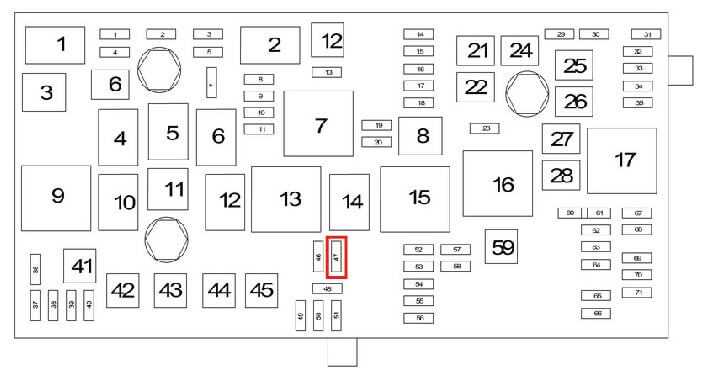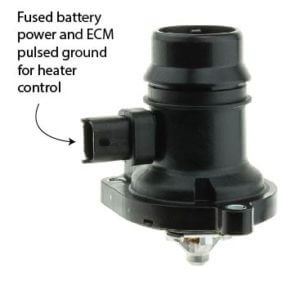P00B7 Code on Chevy: Fix for Engine Coolant Flow Insufficient
P00B7 Code on Chevy: The most common cause
A P00B7 code is defined as Engine Coolant Flow Insufficient. The code indicates an issue with the engine coolant flow valve (thermostat). When this code pops up, it typically means the valve is stuck open or closed.
The code sets when the ECM detects a temperature difference of more than 68°F between the radiator coolant temperature sensor (RCT) and the engine coolant temperature sensor (ECT). The ECM monitors both sensors to determine whether the electrically heated thermostat is allowing sufficient coolant flow to keep the engine at operating temperature.
Symptoms of a P00B7 code
When a P00B7 Chevy code sets, you may notice that the radiator fans are running at high speed at all times when the engine is running. This is due to the fact that the ECM has detected a large enough difference in temperature between the ECT and RCT to conclude that coolant flow is too low, so it switches the radiator fans to high to prevent engine overheating.
Diagnose a thermostat issue
- Check fuse F47 located in the underhood fuse box. This fuse supplies current to the thermostat heater.

Electric thermostat fuse #47 in underhood fuse box Chevy Cruze
2. Check for battery voltage on the violet/dark blue wire at the thermostat heater.
3. Check the dark blue wire running back to the ECM. You’re looking for opens or short to ground
4. If you have a bi-directional scan tool, command the thermostat heater to run at 100%. Increase idle speed to 3,000RPM. That will cause the thermostat to open fully and you should see coolant temperature drop to less than 185°F.
5. If the temperature does not fall to less than 185°F, replace the thermostat
6. Clear the trouble code after the repair to shut off the high speed fans
7. If the code is still present, check the operation of the ECT and RCT
What is an electric thermostat?
Car makers are installing smaller engines paired with a turbo

Electric thermostat and housing used on small engines
to get the power of a larger engine, but with increased MPG. Because the engines are smaller, they don’t generate the same amount of heat at idle as a larger or older engine.
In addition, short trip driving and low heat generation by the engine may prevent the thermostat from opening as quickly as needed. As a result, the engine doesn’t reach full operating temperature as quickly and may not provide enough passenger compartment heat.
Traditional wax pellet thermostats are slow to respond to temperature change in the engine coolant. So car makers added a heater to the wax pellet to heat it up and force it to open faster to allow full coolant flow and prevent overheating.
A P00B7 code on Chevy is either an electrical issue or a bad thermostat
On the new electronically controlled thermostats the heater in the wax pellet is powered by applying a pulsed current to the heater located inside the pellet. The frequency and amplitude of the pulsed current is determined by the ECM.
When operating properly, the thermostat begins to open by itself when engine coolant reaches 217°F. When 12V current is applied, the thermostat begins to open at 176°F. The thermostat should be fully open at 243°F. The ECM makes the determination whether pellet heating should be done by the engine coolant or by the heater, depending on load conditions
NOTE: GM recommends you DO NOT replace the engine coolant thermostat unless you find a thermostat related trouble code. The ECM monitors the thermostat every time you start the engine and compares the ECT readings to the RCT readings to ensure the thermostat is operating within design parameters.
IMPORTANT: These smaller engines may take longer to reach normal operating temperature. By itself, that is NOT a reason to replace the thermostat. If there are no thermostat related trouble codes and the engine coolant is at the proper level, do NOT replace the thermostat. Do not replace the thermostat as “routine” service when changing the engine coolant.
©, 2017 Rick Muscoplat
Posted on by Rick Muscoplat